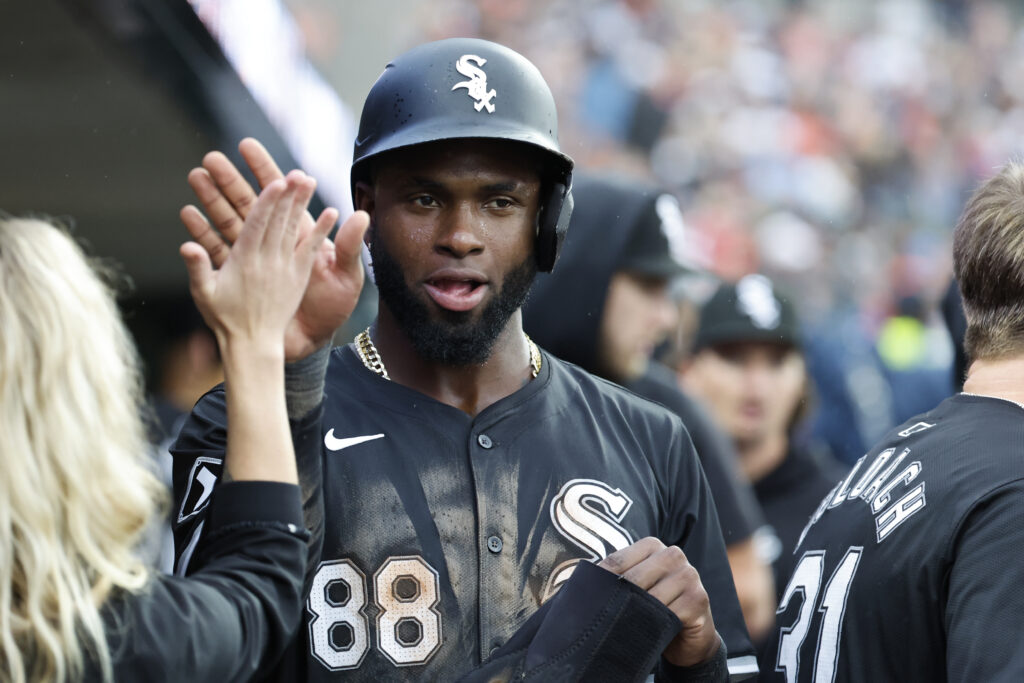The White Sox started the 2025 season having traded Garrett Crochet but still retaining center fielder Luis Robert Jr., despite trade talks with teams like the Dodgers, Reds, and Giants. After a slow start, Robert improved his performance, hitting .241 with four home runs and a higher walk rate. However, concerns about his strikeout rate and contact quality persist. The White Sox face a decision: trade Robert now while he’s performing well or wait for potential increased value by the trade deadline. Teams like the Rangers and Mets, needing outfield help, might be more willing to engage in trade discussions.
The White Sox began the 2025 season having already traded one of their two most significant assets, as Garrett Crochet was sent to Boston in exchange for a package of four prospects, headlined by catcher Kyle Teel. Center fielder Luis Robert Jr. remains the other prominent asset, staying with the team despite discussions with various clubs about a potential trade. The Dodgers, Reds, and Giants have all reportedly engaged with Chicago regarding Robert, with L.A. outfielder James Outman and Cincinnati infield prospect Edwin Arroyo among the names discussed in potential deals.
Clearly, the White Sox didn’t find an offer compelling enough to trade Robert, as he continues to wear a South Siders jersey. Chicago hoped that Robert would have a stellar first half to boost his trade value before the deadline, but the initial weeks of the season raised concerns about that strategy. By April 16, Robert was posting a troubling .143/.234/.214 line, with a 27.3% strikeout rate and virtually no power. This sluggish performance led MLBTR’s Anthony Franco to examine Robert in a piece for front office subscribers, highlighting that while Robert was walking more than ever, his swing-and-miss tendency required significantly more power than he had shown thus far this season.
Robert responded to the challenge. Just three days later, he blasted a home run in Boston, and since then, he has achieved an impressive .241/.371/.483 line with four homers, two doubles, and an outstanding 17.1% walk rate. Despite his overall season numbers remaining below average (86 wRC+), a season-long 13.2% barrel rate, 14.3% walk rate, and .331 xwOBA indicate that positive progress is being made for both Robert and the White Sox. However, challenges remain; Robert’s strikeout rate has increased to above 30% (31.4%), his in-zone contact rate has dropped from the previous two years, and he is producing the highest soft contact rate (27.0%) of his career.
The pressing question for the White Sox is how swiftly they should aim to finalize a deal. If Robert’s recent success proves sustainable, it could be prudent for the team to wait until closer to the trade deadline to sell him. By then, his overall season numbers could surpass average, possibly eliciting better offers. Conversely, if the organization doubts the sustainability of Robert’s recent power surge and improved plate discipline, or if they have concerns about his rising strikeout rate, there may be a case for trading him now while he’s still performing well. USA Today’s Bob Nightengale reported over the weekend that if Robert continues his hot streak, the club aims to trade him by Memorial Day.
Trading a player with Robert’s star potential before June would be a bold maneuver, but not without precedent. Just last year, the Marlins dealt Luis Arraez to the Padres in early May. Few executives are as aggressive as San Diego’s A.J. Preller, but that doesn’t rule out a potential deal. The Giants may find themselves more willing to pay for Robert given their solid start, or recent injuries to Tommy Edman and Teoscar Hernandez could push the Dodgers to make a deal. The Reds, having slipped below .500 after briefly contending for a playoff spot, are also facing lackluster production from an outfield with an 88 wRC+, tied for the seventh-worst in baseball.
All three teams that have previously shown interest in Robert now have reasons to pursue him more aggressively, not to mention other potential suitors. The Rangers recently lost center fielder Leody Taveras on waivers and are seeking ways to revive their struggling offense, though they might hesitate to take on the remainder of his $15MM salary. The Mets are experiencing early season success but would likely prefer more than Tyrone Taylor as their everyday center fielder. Both Atlanta and Kansas City are trying to be competitive this year but have faced the least productive outfields in the league thus far. If even one of those teams meets Chicago’s asking price, one could argue that risking injury or another cold streak isn’t worth the possible reward of a bidding war in July. After all, the White Sox experienced the pitfalls of waiting too long to trade a player last year when they received only a nominal return for Eloy Jimenez, who ultimately had his club option declined by the Orioles last winter and ended up in the Rays organization on a minor league deal.
What do MLBTR readers think the White Sox should do with Robert? Should they pursue a deal immediately, or wait in hopes that a prolonged hot streak boosts his value? Share your thoughts in the poll below:
